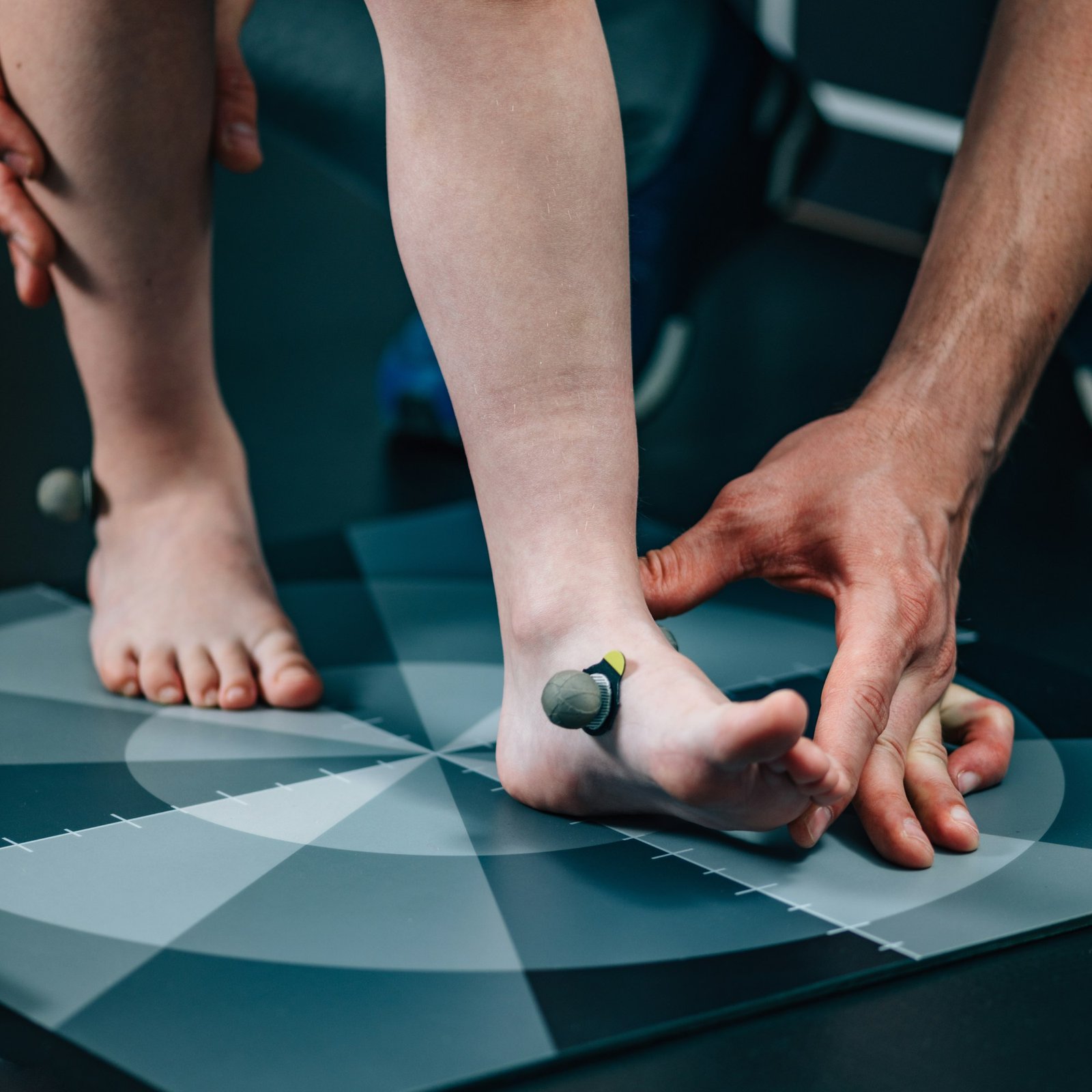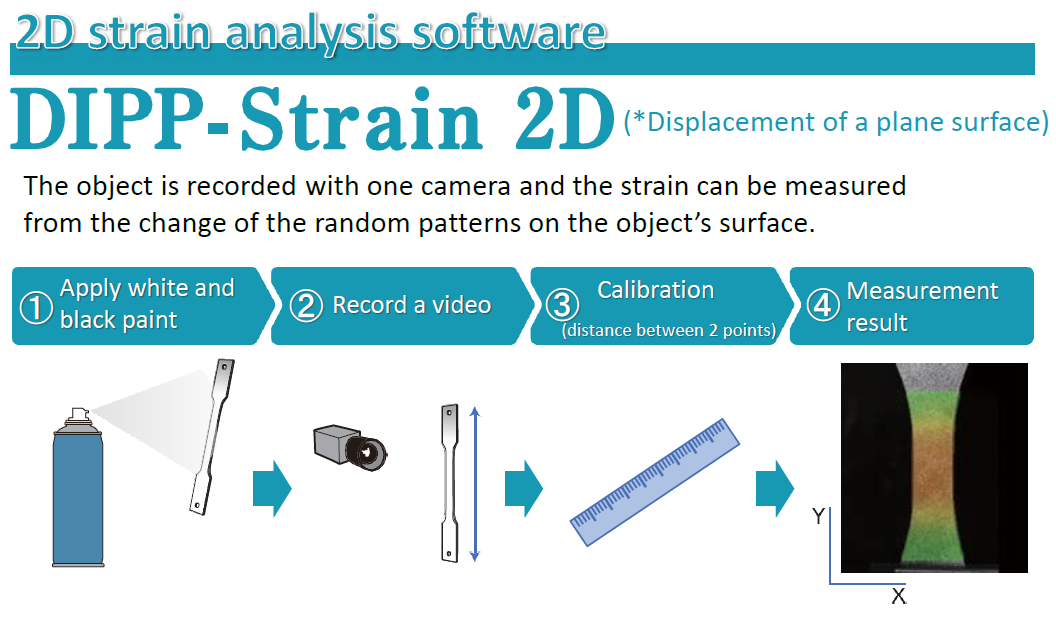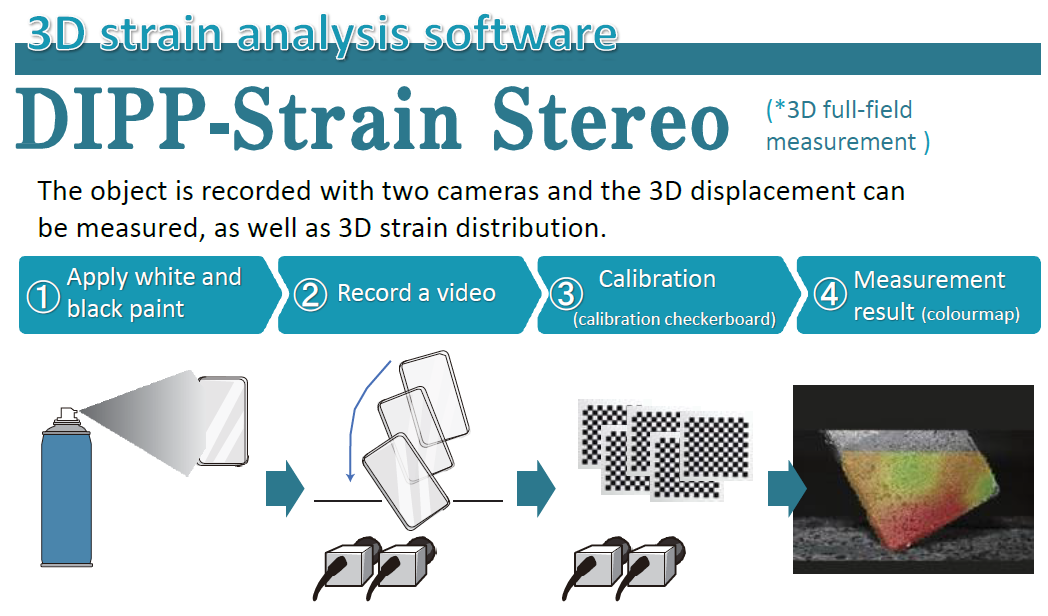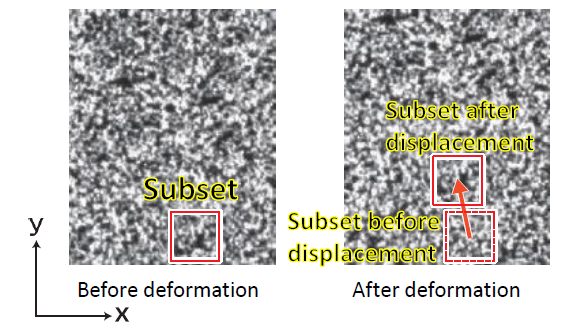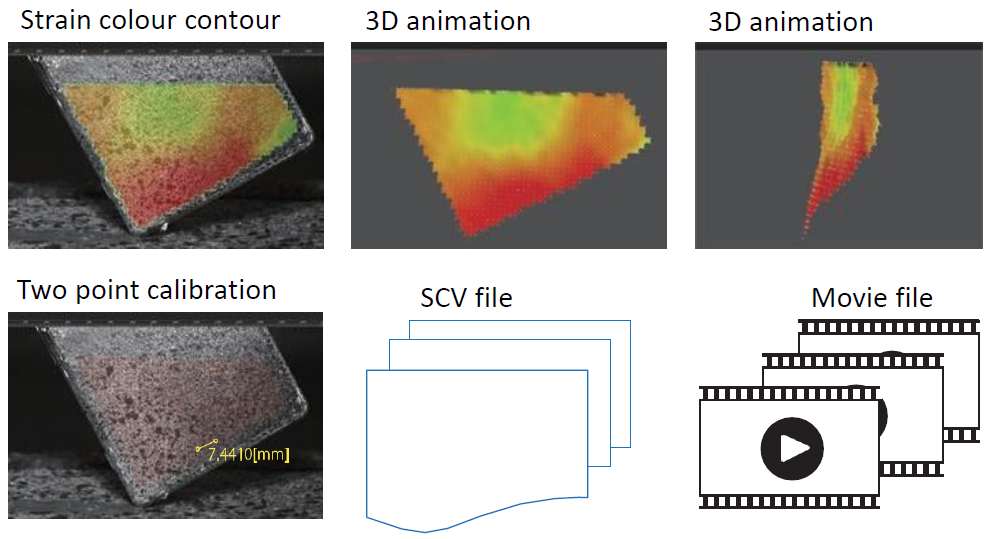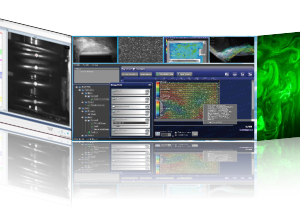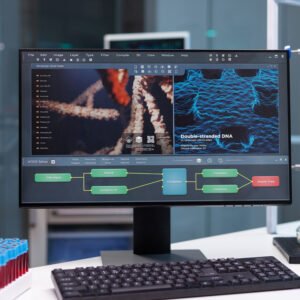Description
Introduction to Digital Image Correlation and DIPP-Strain Software
Digital Image Correlation (DIC) is a non-contact optical method used to measure displacement and strain on an object’s surface. This technique has gained significant attention in fields such as engineering, materials science, and biomechanics due to its ability to provide quantitative data without physical contact. DIC operates by first applying a random black and white speckle pattern on the surface of the object being analyzed. When the object is subjected to deformation, the DIC software tracks the movement of these patterns across sequential images captured during the testing process. By analyzing the changes in the patterns, the software can compute the amount of displacement and, subsequently, the strain experienced by the material.
DIPP-Strain, a product developed by Ditect Corporation, serves as a low-cost digital image correlation solution, offering valuable capabilities for researchers and engineers alike. This software is particularly noteworthy for its user-friendly interface, which enables users to easily navigate its features without requiring extensive technical expertise. Moreover, its high processing speed ensures that large datasets can be analyzed effectively, making it suitable for real-time applications. Accuracy is also a prominent feature of DIPP-Strain; it employs advanced algorithms to enhance the precision of strain measurements. By generating reliable results, DIPP-Strain contributes significantly to the understanding of material behavior under various conditions.
The importance of accurate strain measurement cannot be understated, as it plays a critical role in various applications, including structural health monitoring, failure analysis, and material characterization. As industries increasingly focus on optimizing performance and ensuring safety, tools like DIC and DIPP-Strain become indispensable in the pursuit of comprehensive data on material properties and structural integrity. Through their evolving capabilities, these technologies continue to advance our understanding of complex material interactions and contribute to the overall field of strain analysis.
Technical Aspects of 2D and 3D Strain Analysis
The DIPP-Strain software exemplifies advanced 2D and 3D strain analysis through Digital Image Correlation (DIC) methods. Such technology allows for the precise measurement of deformation on the surface of materials by analyzing the images captured before and after deformation occurs. The process fundamentally relies on the correlation of image frames, where the software tracks changes in surface patterns to derive strain metrics.
At the core of DIPP-Strain’s functionality is the mechanism that identifies subsets within the image frames. This involves searching through multiple overlapping regions of interest to find the corresponding positions across different states of the material. Each subset’s movement is analyzed, and the software calculates a correlation coefficient, which indicates how well the subset matches between the two images. The objective is to maximize this coefficient, indicating the highest degree of similarity. This sophisticated approach not only measures displacement but ultimately enables the calculation of strain in both two dimensions and three dimensions.
Implementing DIPP-Strain requires specific system specifications to ensure optimal performance. A high-resolution camera is recommended for capturing detailed images, with specifications often suggesting cameras that can achieve at least 5 megapixels. Calibrating the camera is another crucial step, as it ensures accurate geometric measurements and compensates for lens distortion. Proper calibration involves capturing images of a known calibration grid under various angles, which allows the software to map real-world coordinates to image coordinates accurately.
Furthermore, system requirements generally include a robust computer system equipped with adequate processing power and memory capacity to handle the large datasets produced during strain analysis. It is advisable to have a dedicated graphics processing unit (GPU) to expedite the processing of images. Following these technical recommendations will enhance the reliability and accuracy of the strain analysis outcomes achieved through DIPP-Strain.
